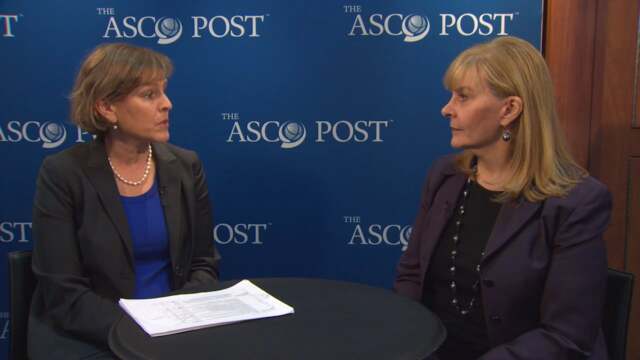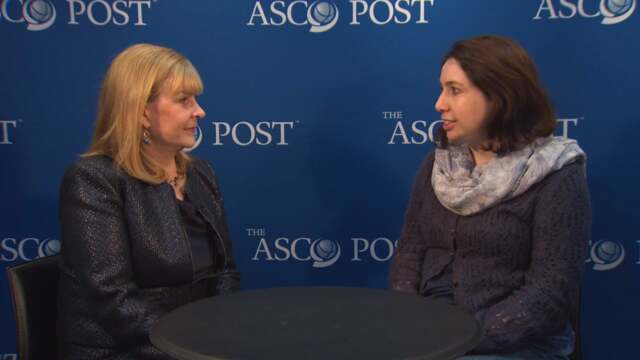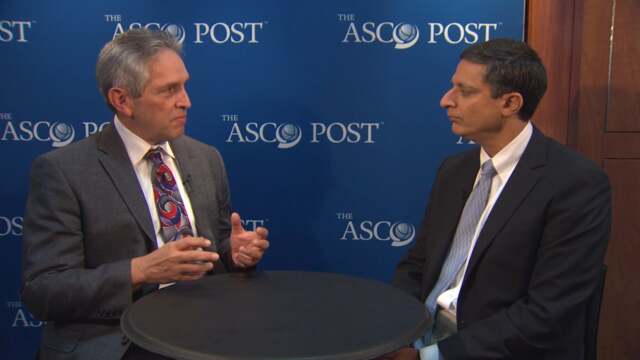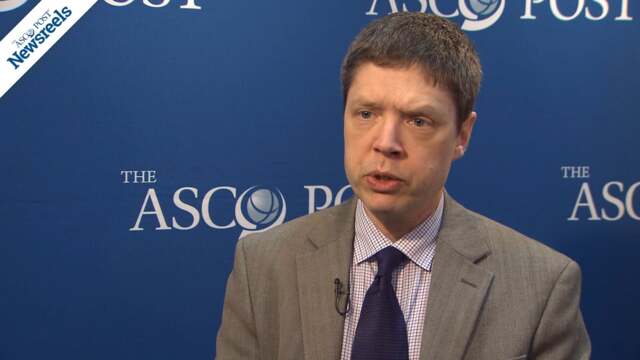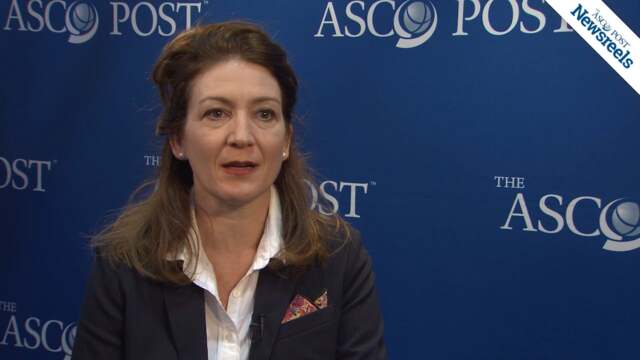Brenda M. Sandmaier, MD, and Sagar Lonial, MD, on Preventing GVHD: Clinical Trial Results
2016 ASH Annual Meeting & Exposition
Brenda M. Sandmaier, MD, of Fred Hutchinson Cancer Research Center, and Sagar Lonial, MD, of Emory University, discuss study findings on sirolimus combined with mycophenolate mofetil and cyclosporine to improve prevention of acute graft-vs-host-disease after unrelated hematopoietic cell transplantation (Abstract 506).
Jean M. Connors, MD, of Brigham and Women’s Hospital, and Julie Vose, MD, MBA, of the University of Nebraska Medical Center, discuss a roundup of key findings on a critical area in the treatment of hematologic malignancies (Abstracts 17, 85, 86, 135, 139, 143, 273, 415, 419, 719, 877, 880).
Julie Vose, MD, MBA, of the University of Nebraska Medical Center, and Mhairi Copland, MB, ChB, PhD, of the Paul O’Gorman Leukaemia Research Centre at the University of Glasgow, discuss decreasing the dose of tyrosine kinase inhibitors in CML patients with stable molecular responses (Abstract 938).
Jose F. Leis, MD, PhD, of the Mayo Clinic, and Sagar Lonial, MD, of Emory University, discuss a session on CLL treatment (excluding transplantation): ibrutinib resistance, transformation, and cellular therapy.
Jeffrey E. Lancet, MD, of the H. Lee Moffitt Cancer Center and Research Institute, discusses study findings on survival following allogeneic hematopoietic cell transplantation in older, high-risk acute myeloid leukemia patients initially treated with CPX-351 liposome injection vs standard cytarabine and daunorubicin (Abstract 906).
Catherine Thieblemont, MD, PhD, of Hôpital Saint-Louis and INSERM, discusses in French phase III trial findings on lenalidomide maintenance in elderly patients with DLBCL treated with R-CHOP in the first-line setting (Abstract 471).
